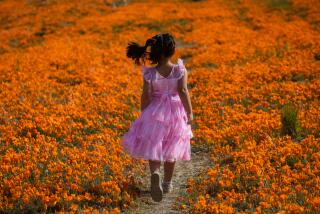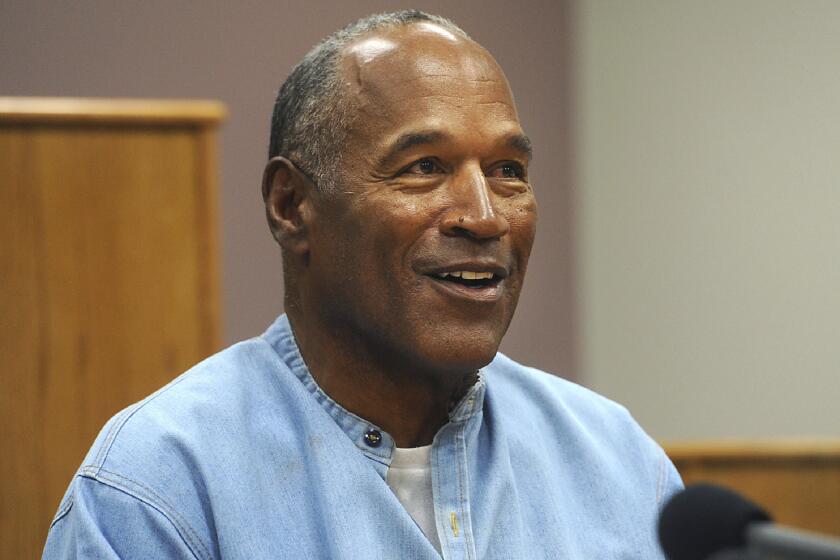Water, 2015, California: The no-good, very bad year -- now, ‘pray for rain’

Boaters and fisherman take advantage of a newly exposed peninsula jutting out into the water on the receding shores of Lake Shasta near Redding, Calif. in July.
The year of the brown lawn and shortened showers concludes Wednesday, with water officials citing bleak statistics and expressing hope that the next few months will bring the heavy rains California so desperately needs.
“Water year” 2015 was hot, dry and fiery, compounding the misery brought on by a fourth year of drought.
“This is a real sobering period we’ve gone through,” Department of Water Resources spokesman Doug Carlson said. “We hope that a year from now we’re looking back at water year 2016 with a great deal of satisfaction to see the drought come down to a halt or at least slowed down in its intensity.”
“Pray for rain,” he added.
Water watchers keep track of precipitation and storage using Oct. 1 as a starting point. That day is considered the beginning of the wet season and the “water year.”
It was exactly halfway through the 2015 cycle — on April 1 — that Californians were schooled on just how dire the circumstance had become.
On that day, Gov. Jerry Brown stood in a barren field — one normally covered by several feet of snow — to announce historic water conservation restrictions. The Sierra snowpack’s water content measured just 5% of normal, obliterating the previous record low of 25%.
The snowpack’s sorry condition was what differentiated 2015 from previous years, said Felicia Marcus, chairwoman of the State Water Resources Control Board. (Snowpack is important because when it melts, it refills the state’s reservoirs during the hot summer months.)
It was “the harbinger of things to come,” Marcus said Tuesday, “the Godzilla of all wake-up calls.”
The 2015 water year also saw the highest average temperature in 120 years of record-keeping. According to the California Climate Tracker, the state’s average temperature was 58.4 degrees — more than three degrees warmer than average and almost a full degree warmer than the previous high in 1995-96.
The biggest impact of warmer temperatures has been that they intensify the effects of drought, increasing evaporation and drying out the soil.
“The character of this drought has been to have record and near-record temperatures,” state climatologist Michael L. Anderson said. “This drought is definitely warmer than its 20th-century counterparts. And when you run into that, you have a higher demand for water and a limited supply, so it creates greater stress.”
The lack of runoff has also reduced stream flow, creating dangerous conditions for native fish.
“In some ways, the drought really began to bite this year,” said Peter Gleick, president of the Pacific Institute, a global water think tank based in Oakland. “We’ve sort of been muddling through the first three years, but this year we really started to see ecosystem damages.”
In recent months, two of the most destructive wildfires in state history have raged across Northern California. According to federal statistics, a total of 813,163 acres have burned across the state this calendar year.
The lack of precipitation has dried out vegetation, driving fuel moisture to critically low levels.
“Four years of such parched conditions have predisposed the vegetation to be explosive, and that’s not exaggerating — it’s explosive,” said Ken Pimlott, director of the California Department of Forestry and Fire Protection. “The [calendar] year hasn’t ended yet, and it’s comparing right up there with some of the most devastating fire seasons on record.”
Meanwhile, new reports have shown that many of the state’s groundwater basins are critically depleted and some farmland in the San Joaquin Valley is sinking at an accelerated pace. As the water year ends, reservoirs across the state are holding about only 54% of their historical average.
Officials said in May that about 1,900 wells had gone dry, leaving people in some of California’s most disadvantaged communities without water.
But there were bright spots, too.
Californians largely responded to Brown’s call to slash urban water use 25%. The state has collectively met and exceeded that target each month since the requirements took effect in June.
Officials are expected to release August water conservation data Thursday, and Marcus said Californians “kept up the effort” in what was a hot month.
To reduce their use, thousands of Californians claimed rebates to rip out their thirsty lawns and replace them with drought-tolerant landscaping. Southern California alone exhausted about $340 million in rebate money quickly.
Public polling has shown that the drought has become a top concern for Californians, and a majority would be willing to pay for water infrastructure or other drought fixes.
“We’re getting to a point where this is not just people turning off their sprinklers,” said water board staff scientist Max Gomberg. “This is really a major shift toward … greater awareness about the value of water and what we all have to do when water is scarce.”
Whether the state’s water-saving ways will continue is unclear, and that issue is complicated by the prospect of a monster El Niño.
Strong El Niños bring a subtropical jet stream that ferries wet storms over the jungles of southern Mexico and Central America northward, putting a train of storms over Southern California and the southern United States.
The National Weather Service has predicted a 95% chance of El Niño continuing throughout the winter.
But experts warned that mega-storms will flood roads, create mudslides and generally wreak havoc on Southern California. They say not to count on El Niño to solve the state’s water problem.
“Hope for the best,” Marcus said, “but prepare for the worst.”
matt.stevens@latimes.com
Times staff writer Bettina Boxall contributed to this report.
Twitter: @ByMattStevens
MORE ON CALIFORNIA DROUGHT:
Tiny mountain community finally gives up its old-school water district
Waterless Slip’N Slide? Dream on, Silicon Valley kids.
Metropolitan Water District aims to build plant to recycle sewage into drinking water
More to Read
Start your day right
Sign up for Essential California for news, features and recommendations from the L.A. Times and beyond in your inbox six days a week.
You may occasionally receive promotional content from the Los Angeles Times.







